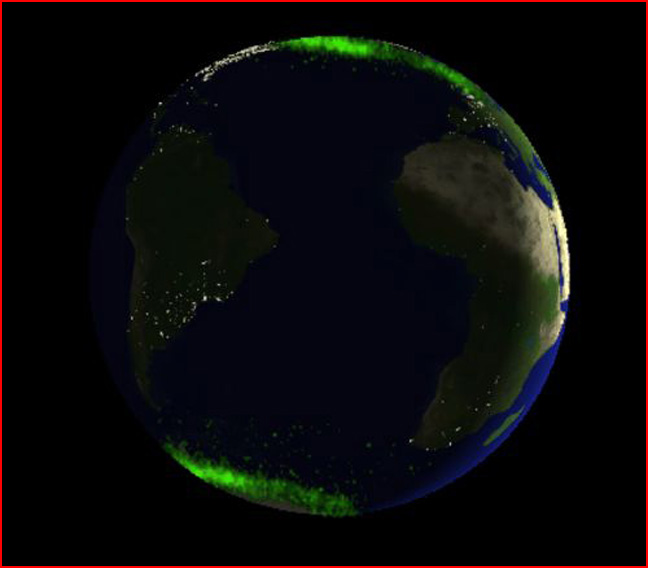|
|
||
 Credit: NASA/The University of Iowa |
||
|
pic of the day Links:
Society for
|
Sep 08, 2004 City lights and auroras. Two different scales of plasma phenomena. We have a good understanding of what causes the city lights. We can even understand that the source of their light is not necessarily where the lights are. There are generators connected to dams and coal-fired furnaces and even windmill farms that produce the electricity. Then high-tension wires carry the electricity cross-country to where it is needed. It is transformed and distributed by substations, then millions of individual users tap into the currents to light up the night. If you stand beneath the high-tension wires, you can hear the buzz of electricity passing, but from space you only see the city lights at the end of the line. Similarly, the electricity that lights up the auroras is produced far away on the sun and carried invisibly on the solar "wind." Man-made space probes have instruments that observe the solar storms that generate it and that measure its density in protons/cubic centimeter. In the Earth's magnetosphere, the auroral current system consists of plasma cables, filaments and sheets. These plasma structures, which follow the same behavior in space as they do in the lab, transfer the energy from Earth's equatorial plasma toroid to the auroral zones, lighting up the polar regions. Both the city lights and the auroras are created by electric circuits. If there is no circuit, there will be no light. Our experience tells us where to look for every stage of the circuit that connects city lights. And we know that if we break that circuit at any point along its way, the city lights will fail. But we've only had the technology to observe the auroral circuits in space for a few decades. How long before our new experiences find a way to trace the circuits of all the electrical currents in space? |
|
|
Copyright 2004: thunderbolts.info |
||
